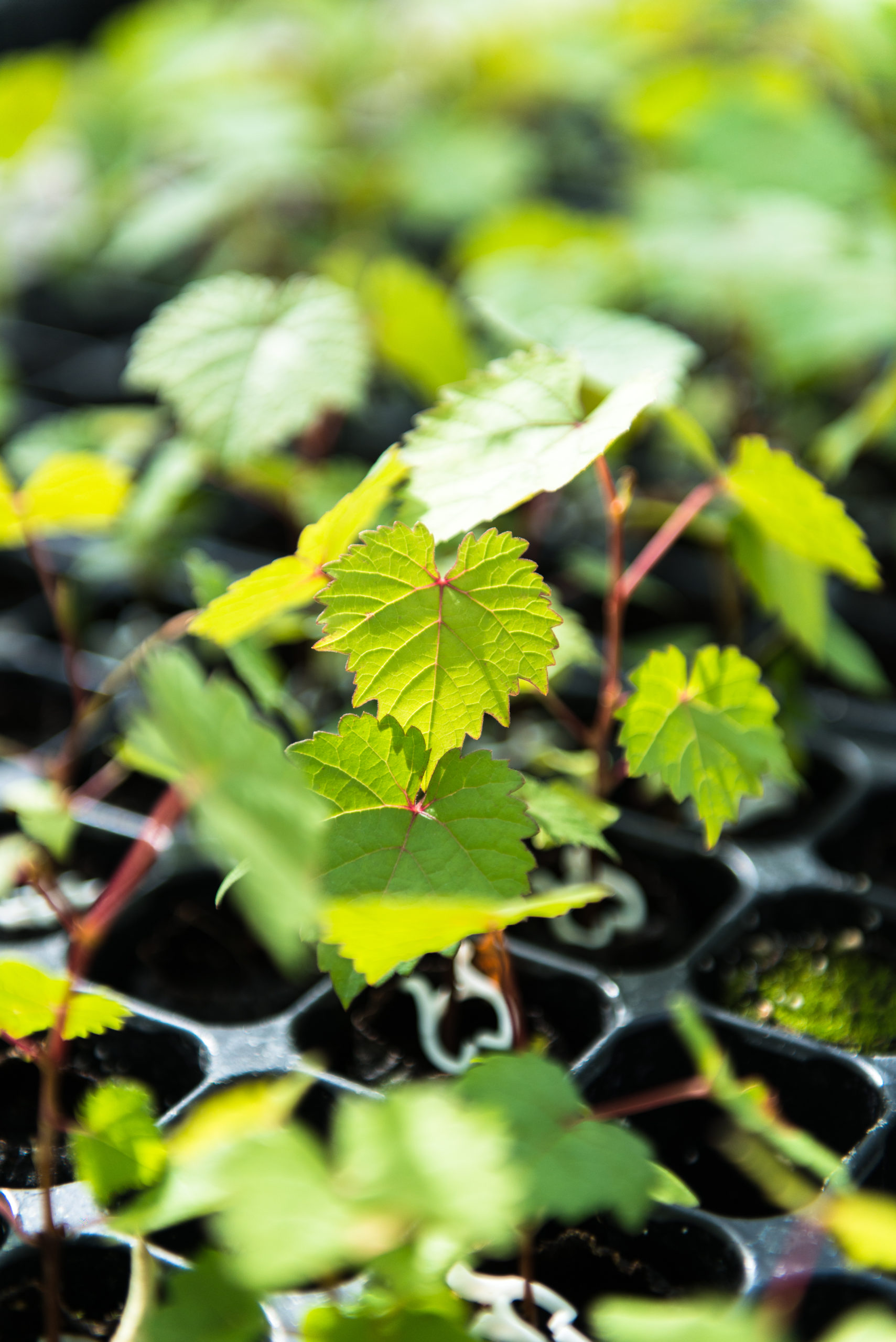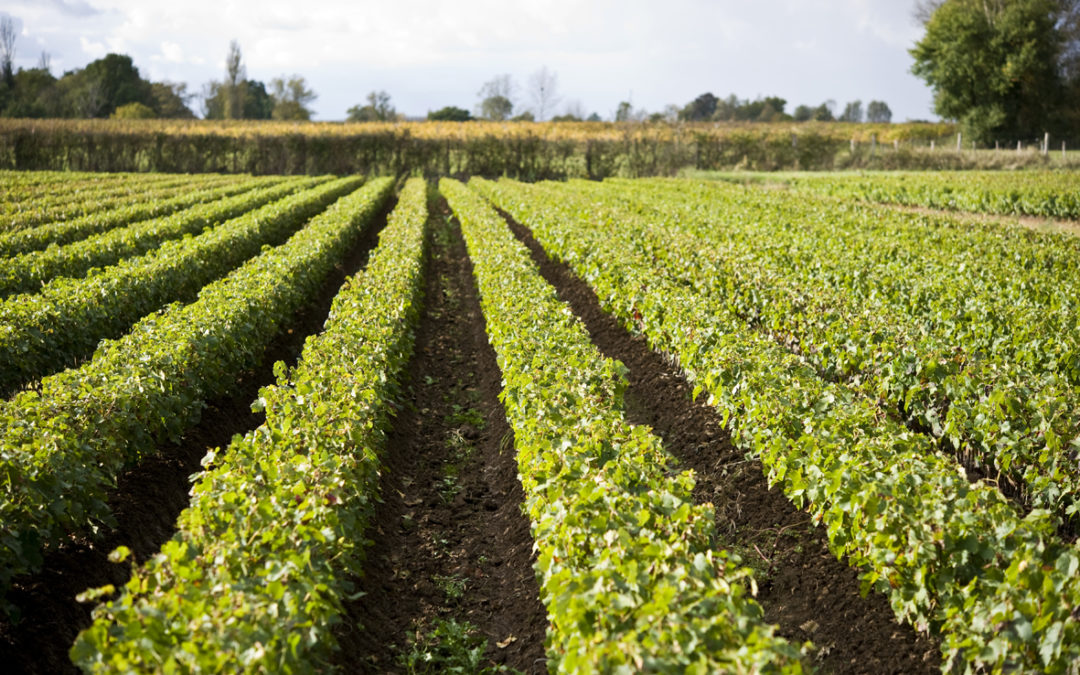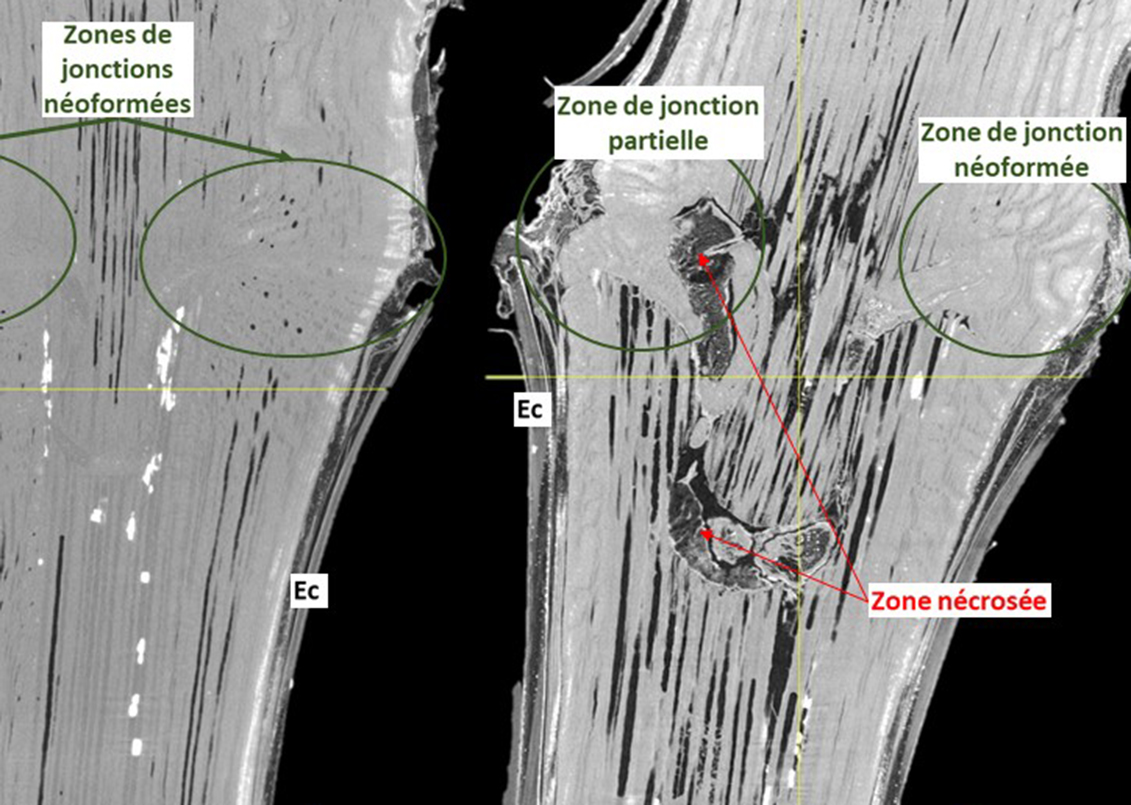From clonal selection to variety creation: a change of direction for the IFV’s Plant Material Centre
IFV and INRAE conduct vine improvement programmes with the aim of reducing the dependence of viticulture on phytosanitary inputs. The main target is resistance to cryptogamic diseases (mildew, powdery mildew and black rot), which alone account for more than 80% of pesticide consumption by the industry.
INRAE, working within the UMR SVQV joint research unit in Colmar Alsace, studied the genetic determinism of resistance in wild vines of American or Asian origin. It developed molecular markers associated with resistance factors, as well as resistance biotests for mildew and powdery mildew. Research continues into black rot resistance.
A programme was set up in 2000 to create wine grape varieties by pyramiding complementary resistance factors, available in introgress form in the cultivated gene pool, by hybridization. This made it possible to create around fifty varieties with oligogenic resistance and producing quality wine with differing maturation periods suited to the major French climatic zones. Four of them were registered in the National Catalogue and classified in 2018. Another 20 are expected to follow by 2025.
IFV, together with its partners from the joint research unit UMT Géno-Vigne® (IFV, Montpellier SupAgro, INRAE DAAV team of UMR AGAP), has also carried out work of no lesser importance. Based on the varietal creation work by INRAE at Domaine de Vassal and the experience of Alain Bouquet†, in 2007 it relaunched a programme to create table grape varieties according to the same principles as those of the UMR SVQV (pyramiding resistance genes).
This led to the creation of around thirty varieties with oligogenic resistance, some of which are close to a “wine grape” type.
Since 2013, the two institutes have been working with the main winegrowing regions on varietal creation programmes aimed at obtaining new resistant and regionally specific varieties.
In each programme, emblematic grape varieties have been selected whose qualities are to be preserved for the coming generations, in agreement with professionals.
They are crossbred by hybridization with resistance donor genotypes.
Today, about 1,400 genotypes have been generated in this way: descendants(progeny?) of Ugni blanc, Chardonnay, Pinot noir, Syrah, Grenache, Sauvignon, Cabernet franc, Colombard, Cinsaut, Vermentino, Riesling, etc.
These genotypes have been selected using molecular marker-assisted selection to verify their kinship, that they have inherited resistance factors from the resistant parent and that they are hermaphroditic. This marker-assisted selection also makes it possible to distinguish colour.
The first seedlings from these various programmes have been planted since 2016 in experimental plots, to monitor “stage 2”.
IFV at Domaine de l’Espiguette conserves all the genotypes for the duration of stage 2. At the end of this phase, about twenty individuals will be selected for the final stage, called VCU(Value for Cultivation and USE), or stage 3.
This final step should result in registration in the Official Catalogue of 3 to 4 new varieties per programme.
Climate change is also taken into account in the choice of parents for crossbreeding. It will also be taken into account in the observations made at stage 2, where later varieties with a more limited potential for sugar accumulation will be retained, while at the same time close attention will be paid to organoleptic characteristics, which must of course be a guideline in any selection.
How are grape varieties created?
Whereas clonal selection is a method of vegetative propagation, i.e. the identical reproduction of the same individuals, varietal creation is a matter of sexual reproduction. This means that two parents are required for crossbreeding.
In this case, pollen will be collected from the inflorescences just before flowering from the parent that will be used as the male. The pollen is then sieved and stored in a fridge in dry conditions.
The inflorescences on the other parent, which will be used as a female, are castrated, which means removing the flower caps and eliminating the stamens.
By leaving the pistil, the female organ, alone, the pollen can be spread with a brush the next day. This operation is repeated every day for 6 or 7 days.
After a fortnight, the bunches are placed in a net to form bunches and fully ripen. After this time, we extract the seeds and put them in water. Those that float have no embryo and are eliminated.
The others are placed in cold storage for a few weeks. After this time, they will be allowed to germinate.
As soon as the first leaves appear, a few pieces of the plant are then removed for MAS (Selective Assisted Molecular Marker Assisted Selection). MAS allows to quickly verify the identity of the parents, the heritability of the characteristics (resistance factors), the colour and the hermaphroditic character.
The selected individuals are conserved so that by the end of year n+1 grafts in sufficient number and of sufficient diameter have been obtained to be grafted.
- [Webinar] Solutions for alternative weed control #1 Electric weeding – Case studies in vineyard, grassland - 27 April 2023
- Mechanical weeding and required technical skills - 26 March 2023
- 10 questions and answers about plant cover in the vineyard - 25 March 2023
- What are the new avenues of research in system experimentation? - 23 March 2023
- What is clonal selection? - 23 March 2023
- Phthalates : Potential sources and control measures - 23 March 2023
- Rosé wines: impact of storage conditions in tank on the polyphenol composition and color - 29 March 2021
- Reducing alcohol content in wines by combining canopy management practices and biological techniques - 29 March 2021
- Enzymes in oenology : production, regulation, applications - 29 March 2021
- Herbicide-free strategies - 26 March 2021





Réagir à l'article
Pour pouvoir laisser un commentaire, vous devez être inscrit sur notre site.
M'inscrireL'inscription est gratuite.
Déjà inscrit
Lost your password?